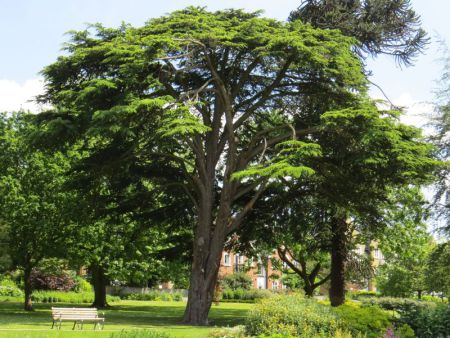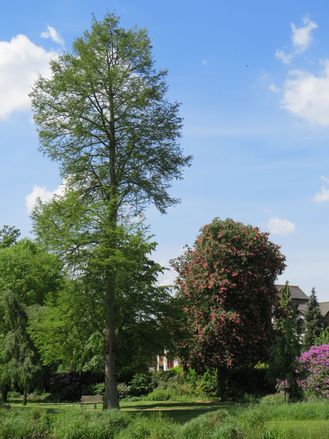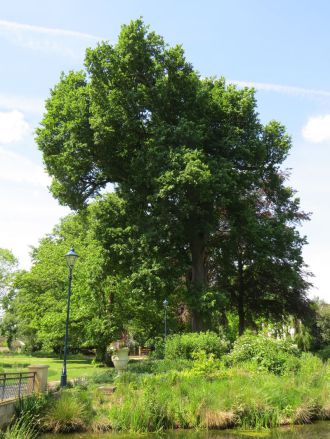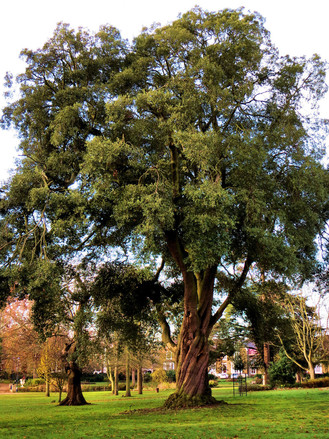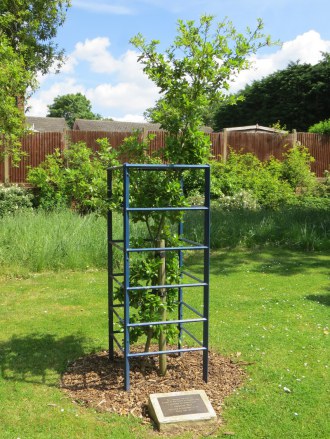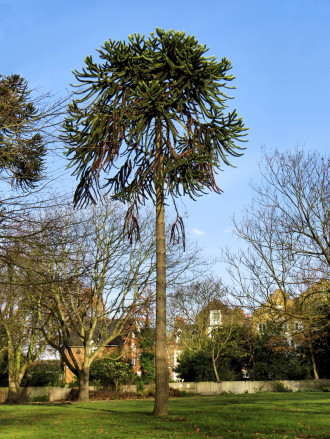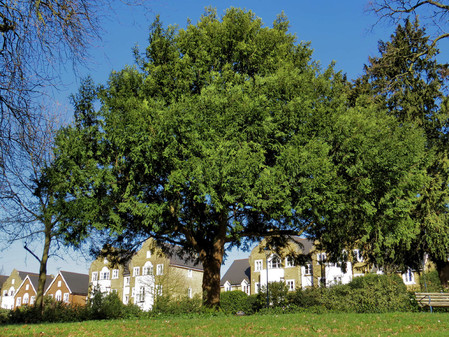
Herschel Park Arboretum
European Ash (Fraxinus excelsior)
The Ash is found in Europe, Asia Minor and North Africa. It can grow up to 40m in height and have a girth of 6m. The tree is often coppiced to provide a renewable source of timber. Wood from the Ash tree is very hard and durable and is used to make hockey sticks, oars, walking sticks, bows, tool handles, tennis rackets, and snooker cues. The wood if used as firewood burns very well.
Deodar Cedar (Cedrus deodara)
Also known as the Himalayan Cedar, this tree was introduced to Britain in 1831. Deodars can grow up to 75m tall and the wood from this cedar is strong and durable. It is used for the construction of temples, palaces, bridges and railway sleepers.
Horse Chestnut
(Aesculus hippocastanum)
The horse chestnut was introduced into England in 1616. It can grow to 30m. The tree produces pink and white flowers in spring and early summer, and in the autumn it yields conkers. Herschel Park’s Horse Chestnut dates to about 1700; almost 150 years before the park was laid out.
Swamp Cypress (Taxodium distichum)
This tree is a member of the redwood family and after surviving prehistoric times it died out in the British Isles during the last Ice Age. It was re-introduced to England in 1640.
English Oak (Quercus robur)
Dating back to prehistoric times, the English Oak can be found over most of Europe, Asia and parts of North Africa. It is slow growing and can reach a height of 43 metres. English Oaks in Herschel Park date from the 1780s but some in Britain are over 1,000 years old. The timber from oaks has been used for the construction of buildings and ships. Oak trees are home to a great variety of wildlife.
Holm Oak (Quercus ilex)
The Holm Oak or ‘holly oak’ is an evergreen tree that was introduced to Britain from the Mediterranean around 400 years ago. The wood from this oak is very hard and durable and was used in construction, especially for pillars, waggons, tools and wine casks.
Lucombe Oak
(Quercus x hispanica ‘Lucombeana’)
This hybrid oak was first grown in 1762 by William Lucombe, an 18th century nurseryman in St Thomas, Exeter. It is a cross between a Turkey Oak and a Cork Oak and keeps its leaves throughout the winter. The tree in the photograph was planted on 22nd May 2011 by the Friends of Herschel Park to mark the park’s reopening after restoration.
Turkey Oak (Quercus cerris)
Before the last Ice Age, the Turkey Oak was found in Britain and Northern Europe. In the 1730s it was re-introduced into southern England. It can grow to a height of 140 feet. The Herschel Park Turkey Oak was planted around 1780 and, at 38m tall, is the tallest tree in the park.
Monkey Puzzle (Araucaria araucana)
The Monkey Puzzle tree is an evergreen native to southern Chile and western Argentina. The tree was introduced to England around 1830 and the Herschel Park example was planted around 1857. The tree has scaly, spikey leaves and can grow up to 40m high. The trunk’s diameter can reach up to 2m wide.
English Yew (Taxus baccata)
My name is Gary Flint. I'm author, photographer & illustrator for Postcards from Slough. If you wish to make any comments on the contents of the website please click on the ladybird below:
Gary Flint
08/03/1961 - 09/04/2019
Postcards from Slough is an independently funded website. We are open to offers of sponsorship from companies that have any connections to the town. To contact us please click on the ladybird below:
Chalvey Community Forum
Postcards from Slough is linked with a local action group the Chalvey Community Forum. The group liaises with various local organisations in order to improve the quality of life for residents in the ward of Chalvey and Salt Hill. To learn more please click on the maidenhair leaf below:
Museum of Berkshire Aviation
I volunteer as a guide at the Museum of Berkshire Aviation. It is a special museum and if you would like to know more about the museum then please click on the motif below:
To learn more about the museums activities while staying within this website click on the tab at the top of the page or on the motif below:
Graces Guide
Postcards from Slough uses some images from Grace's Guide. Click on the button below:
British Listed Buildings
Postcards from Slough contributes material to British Listed Buildings and uses the site for cross referencing purposes. Click on the button below:
